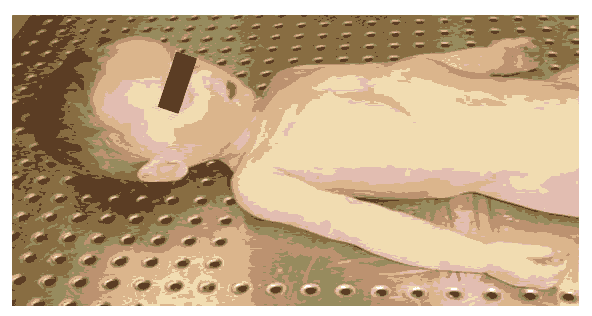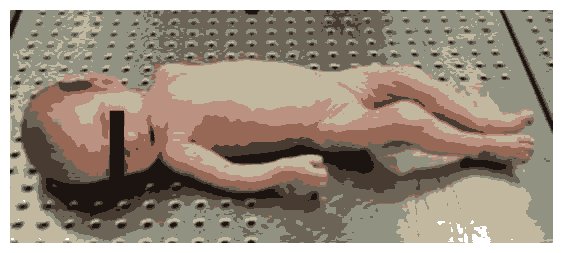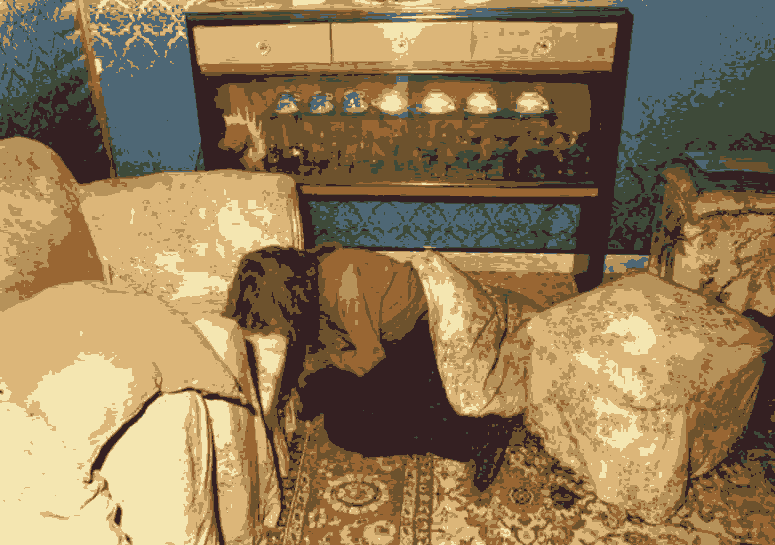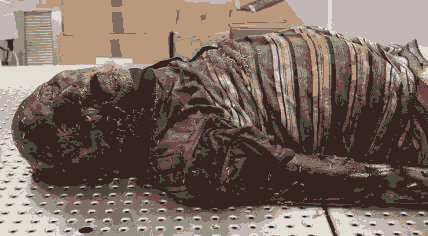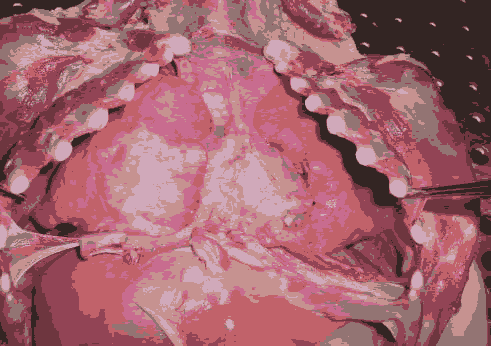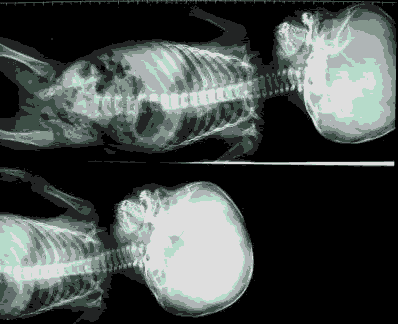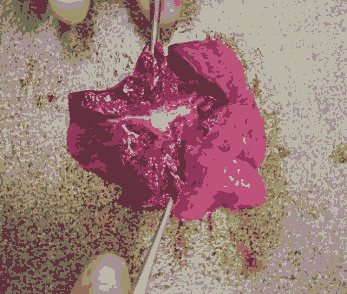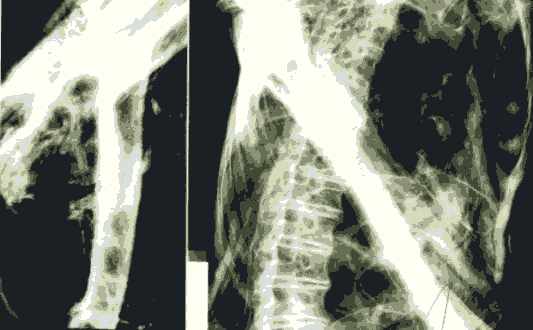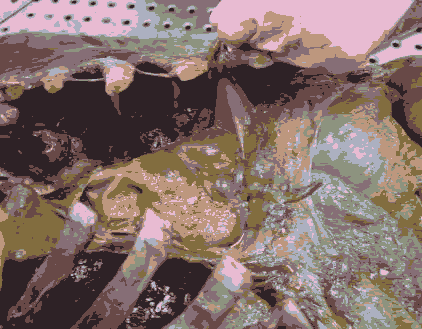Research Article: 2021 Vol: 24 Issue: 1S
People Neglect: Abuse and Neglect in Weak Categories
Maricla Marrone, Institute of Legal Medicine, University of Bari
Serena Corradi, Institute of Legal Medicine, University of Bari
Michele Telegrafo, Institute of Legal Medicine, University of Bari
Alessandra Stellacci, Institute of Legal Medicine, University of Bari
Benedetta Pia De Luca, Institute of Legal Medicine, University of Bari
Pierluigi Caricato, Institute of Legal Medicine, University of Bari
Davide Ferorelli, Institute of Legal Medicine, University of Bari
Stefania Lonero, Institute of Legal Medicine, University of Bari
Francesco Vinci, Institute of Legal Medicine, University of Bari
Sabrina Leonardi, Institute of Legal Medicine, University of Bari
Abstract
The phenomenon of abuse and neglect affects not only minors but also the elderly. The authors present four cases that demonstrate how negligent maltreatment is a more frequent phenomenon than abuse classically understood as the result of violent physical maltreatment. The identification of the causal/noncausal role of negligent behavior in fatal cases must, due to the particular difficulty in defining it, make use of a complete and accurate forensic investigation. However, the universal character of this type of maltreatment should not be overlooked since it could affect not only the age groups that classically, even according to the most recent international forensic considerations, are involved in the phenomenon but any individual, of any age, who for pathological conditions or pathophysiological is in the position of having to depend on another person for his state of health and well-being.
Keywords
Abuse, Neglect, Weak Categories.
Introduction
The terms "Child Abuse" and "Neglect" mean the forms of physical or mental harm, sexual abuse, negligent treatment, or mistreatment of a person under the age of 18 by a person responsible for his or her state of health and well-being. The forms of physical neglect also include refusal or unjustified delay in requesting or providing the necessary medical care (Stocker & Dehner, 1992). The effects of child maltreatment are known to be potentially far reaching in terms of adult health (World Health Organization, 1999), socio-economic cost (National Commission of Inquiry into the Prevention of Child Abuse, 1996), and burden of disease (World Health Organization, 2002). Child Abuse has been shown to have lifelong adverse health, social, and economic consequences for survivors, including behavioral problems (Felitti et al., 1998); mental health conditions such as post-traumatic stress disorder (Browne & Finkelhor, 1986); increased risk for delinquency, adult criminality, and violent behavior (Fang & Corso, 2007); increased risk of chronic diseases (Browne & Finkelhor, 1986); lasting impacts or disability from physical injury (Dominguez et al., 2001); reduced health-related quality of life (Corso, 2010); and lower levels of adult economic well-being (Corso, 2008).
Although less known, the terms "Elder Abuse" and "Neglect" indicate those forms of physical or mental abuse, abandonment, and neglect that affect another category at risk, namely that of the elderly (Collins, 2006; Akaza et al., 2003). The field of elder abuse is estimated to have lagged more than 20 years behind that of child abuse or intimate partner violence (National Research Council, 2003). Elder self-neglect and abuse are serious, common, and under recognized public health issues. There are an estimated 2 million cases of elder self-neglect and abuse in the United States (National Research Council, 2003; National Center on Elder Abuse, 1998).
It is difficult to recognize and identify these forms of maltreatment: it is fundamental the rules of the on-site investigations, the anamnesis, the socio-family context, as well as autoptic and "ancillary" investigations (radiographic, toxicological, and laboratory study).
Methods and Materials
Four deaths with suspicion of abuse and/or neglect occurred in the same period in Puglia, came to our observation: two infants (one male and the other female), and two subjects over the age of 65, both male.
We have analyzed these cases concerning the sex and age of the subjects, to the historical-circumstantial, clinical- anamnestic, socio-family data, to the causes and methods of death, to the results of the inspection and autopsy investigations, as well as to any instrumental investigations (Rx, toxicology, histopathological investigations).
Case Reports
Case 1
An 8 and a half months old male died in February. He was 71 cm tall, weighed 7.3 kg, located below the third percentage. He was hospitalized for the appearance of more than ten days of cough with subsequent difficulty in breathing and hyperpyrexia. After six days of hospitalization and treatment, the same was discharged with a diagnosis of laryngotracheobronchitis and a pediatric control prescription. Hyperpyrexia recurred when he returned home. The baby was not subjected by family members to any medical treatment or the prescribed pediatric control. The child died after five days for the worsening of the pulmonary picture and the failure to resort to the recommended specialist care. The mother reported about the last hours of life that the baby was crying constantly and that in an attempt to lower his temperature she applied only cold water compresses. Early in the morning, the child had calmed down and the mother fell asleep. After several hours she found him by now agonizing: the intervention of the health workers was therefore requested which however was now late, being able only to ascertain the death of the child.
Case 2
A 5 months old female died in March. She was 65 cm tall, weighed 6.6 kg. The young mother reported having "cradled her vigorously" in an attempt to make her fall asleep. When she woke up she would have noticed the leakage of blood material from the respiratory orifices, so she would have taken her to the local emergency room where she arrived lifelessly. Here the doctors detected the blood percolation from the respiratory orifices together with the initial formation of hypostases and cadaveric rigidity.
Figure 2: Absence of Injuries of a Violent Nature. Aspecific Asphyxia Death Signs (Mantle Hypostasis, Petechiae, Cyanosis)
Case 3
An 86-year old male was found dead in his house by firefighters. No one had noticed his disappearance. The last time he was seen entering or leaving his apartment was seven years earlier. He was abandoned by the family and ignored by social services and neighbors. The utilities (gas, light, and water) had been interrupted by a few years for default. The condominium administrator had therefore requested the intervention of the fire brigade to recover the unpaid condominium shares for years.
Case 4
A 70-year old male was found dead in August 2006. He was in charge for about 40 years in a nursing home for chronic psychiatric pathology, pneumopathy, liver disease, and sclerotic heart disease. One evening in late July after dinner he wandered off along the avenues of the clinic, never coming back. After some time the head of the structure denounced to the police the "arbitrary" removal of the elderly from the hospital. The research was in vain. Ten days later, a cleaner smelled a rotting odor coming from a disused bathroom and found the corpse of the man.
Results
Case 1
The forensic medical examinations, inspection in combination with the collection of circumstantial historical data and clinical anamnestic, ascertained the absence of particularly disadvantaged family and social conditions. The autopsy investigations excluded violent injuries.
External examination revealed hypostasis with petechial aspects, labial, and sub-nail cyanosis. The cadaveric section and subsequent histological investigations revelated polyvisceral congestion, cerebral and pulmonary edema with an impressive bilateral pulmonary and bronchial lymphocytic phlogistic infiltrate splenic activation and cardiac granulocyte infiltration. The cause of death was ascribed to a natural pathological cause identified in severe bilateral bronchopneumonia secondary to infection. The oropharyngeal and tracheal swabs were positive for polymicrobial colonization.
In conclusion, the behavior of family members was considered negligent. They did not respect the prescriptions provided by the doctors at the time of discharge of the newborn, superficially evaluating the child's illness.
Case 2
The forensic examinations were conducted with the aid of total body radiological investigations, negative for bone lesions and suggestive instead for a right perimediastinal parenchymal opacity.
The external examination was also negative for lesions of a violent nature. the external examination showed abundant hypostasis, with mantle and petechial aspects, labial and sub-nail cyanosis, foamy percolation with a frank blood aspect from the respiratory orifices. Subsequent sectoral investigations made it possible to detect polyvisceral congestion, cerebral and pulmonary edema, and the presence of sub-pleural and sub-pericardial petechial formations together with a hemorrhagic aspect of the right lung. Characteristic was the relief of stratification of mucous material with a haematic aspect on the tracheobronchial tree.
Subsequent histological investigations confirmed the presence of edema and massive congestion in the lungs, at the same time detecting parenchymal hemorrhagic aspects, modest interstitial lympho-monocytic infiltrates, and abundant endobronchial blood material mixed with structures with a vaguely crystalline and weakly eosinophilic morphology. The histopathological study of the eyeballs did not reveal any morpho-structural alterations.
As a corollary, the examination of the clothes found that they were appropriate for the season, clean and in order. The surveys performed about the existence of traumatic violent injuries were negative. The initial suspicion of the cause of violent death secondary to physical abuse (Battered Child Syndrome or Shaken Baby Syndrome) was ruled out. The relief of endobronchial eosinophilic crystalline material was attributable to residues of food material that had been regurgitated and inhaled for some time and which led to death following ab ingestis pneumonia.
Figure 6: Total Body Radiological Investigation Negative for Bone Demage; Pulmonary Parenchymal Opacity Right
Case 3
The investigation revealed the absence of signs of forced entry into the apartment and an overall state of neglect. The corpse appeared curled at the foot of a couch, to which it was partially resting with the lower limbs crossed and the upper ones tight to the lap; it was completely mummified, surrounded by empty puppets of cadaveric dipterans and had very long brown hair. The corpse was wearing a reverse sweater and a pair of worn-out old slippers.
External examination, sectorial investigations, and X-rays revealed no violent injuries. The investigations carried out led to believe that death from natural pathological causes was more likely. It was not possible to determine with certainty the time of death, because of the long average times necessary for the realization of the special transformative process.
Whereas the victim was last seen alive seven years earlier. In conclusion, the victim died in a state of complete abandonment, without institutional or individual aids. His body was found only because he had not paid the expenses of the condominium.
Case 4
The day after the body was found, the medical examines were carried out. The degree of advancement of putrefactive phenomena (initial colliquative), summer temperatures, the absence of gastric content (the victim disappeared after dining), and the stage of development of cadaveric dipterans (Calliphoridi of the genus Lucilia in 3 Instar stage) allowed to date the exitus to 6-7 days before their relief.
The sectorial investigations made it possible to detect with certainty the absence of violent lesions, showing instead a picture of edema and pulmonary congestion. Macro and microscopic examination of the heart revealed coronary sclerosis with atherosclerotic sub-occluding lumen plates for about 70% of the diameter.
These findings allowed the conclusion of a natural pathological cause of cardiac origin. The death was traced back to about 6-7 days before the medical examination. The elderly died about 2-3 days after his disappearance.
In conclusion, there was a lack of vigilance and a delay in the activation of research operations by health workers responsible for the health and well-being of the elderly.
In recent decades in the field of forensics, attention has been paid to the phenomenon of child abuse, identified as "Child Abuse and Neglect" (Knight & Collins, 2005; Fieguth et al., 2002; & Collins & Presnell, 2007). There are different types of Child Neglect. Among these is the lack or delayed request for medical intervention to safeguard the health of the child called Physical Neglect. This type of mistreatment may be intentional or may be linked to ignorance, inexperience, or misinformation of the subject who is responsible for the minor (Stocker & Dehner, 1992; Knight & Collins, 2005).
It is a common opinion that the concept of ill-treatment/abuse is treated as a form of predominantly physical harm. Child neglect sometimes plays a causal/noncausal role in the death of the victims. A complete and correct medical- legal investigation becomes crucial due to the difficulty in recognizing and identifying the forms of Child Neglect (Knight & Collins, 2005; Fieguth et al., 2002; Collins & Presnell, 2007). The presence of pathological conditions (e.g., metabolic, congenital diseases) which may lead erroneously to a Child Neglect state (Knight & Collins, 2005) must be taken into account and, where appropriate, excluded.
The identification of these forms of mistreatment becomes more difficult when the victims are the elderly (Bao-Li Zhu et al., 2000). The American Medical Association defines "Elder Mistreatment" as a form of action or omission that involves damage or threat of harm to the health and well-being of the elderly (Collins, 2006). Failure by those responsible for the well- being of the elderly to provide basic care and the services necessary to prevent physical damage or emotional alterations is called "Elder Neglect" (Collins, 2006). Another accepted definition considers such a form of carelessness as refusal or failure to comply in whole or in part with the obligations and/or tasks that one has towards an elderly person (Collins, 2006; Akaza, 2003).
The identification of the forms of "Elder Neglect" becomes even more complex. This phenomenon is underestimated by scientific literature and judicial bodies (Collins & Presnell 2007). Recognition of fatal cases becomes more difficult due to age-related pathological/pathophysiological conditions that may simulate or mask forms of elder abuse (Collins, 2006; Collins & Presnell 2007).
The persons responsible for these crimes are generally the persons responsible for the victims: family members (both for children and for the elderly), long-term health care staff (more frequently for the elderly) (Collins & Presnell 2007; Bao-Li Zhu et al., 2000).
The cases we have observed show that the phenomenon affects both age groups (Bao-Li Zhu et al., 2000, Dyer et al., 2002). In particular conditions, the phenomenon of abuse also affects intermediate age groups: individuals dependent on another person for the state of psycho-physical well-being.
Some situations cannot be identified as forms of abuse or carelessness, which are often classified as accidental or natural (Knight & Collins, 2005). These lethal cases fall within the so-called "gray zone". It is widely believed that a death with suspicion of abuse should be classified as a consequence of a form of physical violence (see Case no.2). In reality, the weaker sections of society are the most frequently victims of abuse, neglected and abandoned to themselves (cf. Case No 1 and 4). The medical diagnosis in case of death with suspicion of abuse is complex for all age groups. Real forms of mistreatment must be distinguished from forms classified as natural or accidental. Even more difficult is the correct identification of the forms of Elder Neglect because the mistreatment of the elderly remains a phenomenon too often misunderstood and underestimated, despite the increase in the average age of life of individuals (Collins, 2006; David et al., 2005). This is due to the varied typology of mistreatment, which is often not exactly framed in known stereotypes. Medical examiners, however, must approach these cases, without preconceived interpretations: a case of apparent abuse may be trivially an accidental event and orient investigations in search of a responsible person, can often be a useless waste of energy and time.
References
- Stocker, J.T., & Dehner, L.P. (1992) Pediatric Pathology. J.B. Lippincott Co, Philadelphia, 1, 257-323.
- World Health Organization (WHO). (1999). Child abuse prevention. Geneva.
- National Commission of Inquiry into the Prevention of Child Abuse (1996). Childhood matters (Volume 1): The report. London: The stationery office.
- World Health Organization (WHO). (2002). World report on violence and health. Geneva.
- Felitti, V.J., Anda, R.F., Nordenberg, D., & Williamson, D.F. (1998). Relationship of childhood abuse and household dysfunction too many of the leading causes of death in adults. The Adverse Childhood Experiences (ACE) study. American Journal of Preventive Medicine, 14(4), 245–258.
- Browne, A., & Finkelhor, D. (1986). Impact of child sexual abuse: A review of the research. Psychological Bulletin, 99(1), 66–77.
- Fang, X., & Corso, P.S. (2007). Child maltreatment, youth violence, and intimate partner violence developmental relationships. American Journal of Preventive Medicine, 33(4), 281–290.
- Dominguez, T.E., Chalom, R., & Costarino, A.T. (2001). The severity and cost of child abuse in the pediatric intensive care unit. Journal of Intensive Care Medicine, 16, 35–41.
- Corso, P.S., Edwards, V.J., Fang, X., & Mercy, J.A. (2008). Health-related quality of life among adults who experienced maltreatment during childhood. American Journal of Public Health, 98(6), 1094– 1100.
- Currie, J., & Widom, C.S. (2010). Long-term consequences of child abuse and neglect on adult economic well-being. Child Maltreatment, 15(2), 111–120.
- Collins, K.A. (2006). Elder maltreatment. A review. Arch Pathol Lab Med., 130, 1290-1296.
- Akaza, K. (2003). Elder abuse and neglect: Social problems revealed from 15 autopsy cases. Legal Medicine, 5, 7–14.
- National Research Council (2003). Elder mistreatment: Abuse, neglect and exploitation in an aging America. National Academies Press, Washington DC.
- National Center on Elder Abuse (1998). The national elder abuse incidence study. American Public Human Services Association, Washington DC.
- Knight L., & Collins K.A., (2005). A 25-Year retrospective review of deaths due to pediatric neglect. Lippincott Williams & Wilkins, Inc, 26(3), 221-228.
- Fieguth A. (2002). Lethal child neglect. Forensic Sci. Int., 130, 8–12.
- Collins, K.A., & Presnell, S.E. (2007). Elder neglect and the pathophysiology of aging. Am J Forensic Med Pathol., 28(2), 157-162.
- Bao-Li, Z. (2000). Child and elderly victims in forensic autopsy during a recent 5 year period in the southern half of Osaka city and surrounding areas. Forensic Sci. Int., 113(1), 215-218.
- Dyer, C.B., Connolly, M.T., & McFeeley, P. (2002). The clinical and medical forensics of elder abuse and neglect. In: Elder mistreatment: Abuse, neglect, and exploitation in an aging America. Washington, DC: The National Academy of Sciences, 339–381.
- David, D., Evan, W.M., & Emma, O.L. (2005). Forensic pathology: Principles and practice. Academic Press: 413-421.
